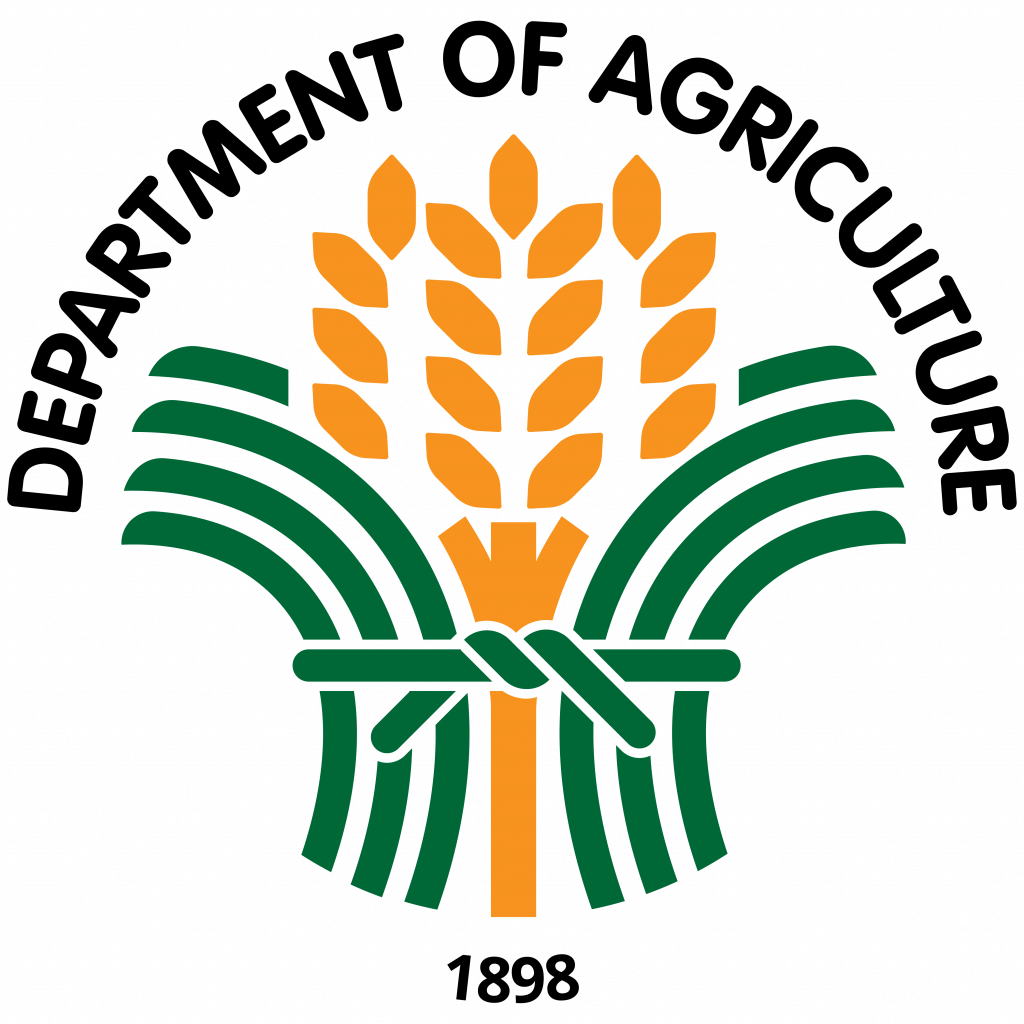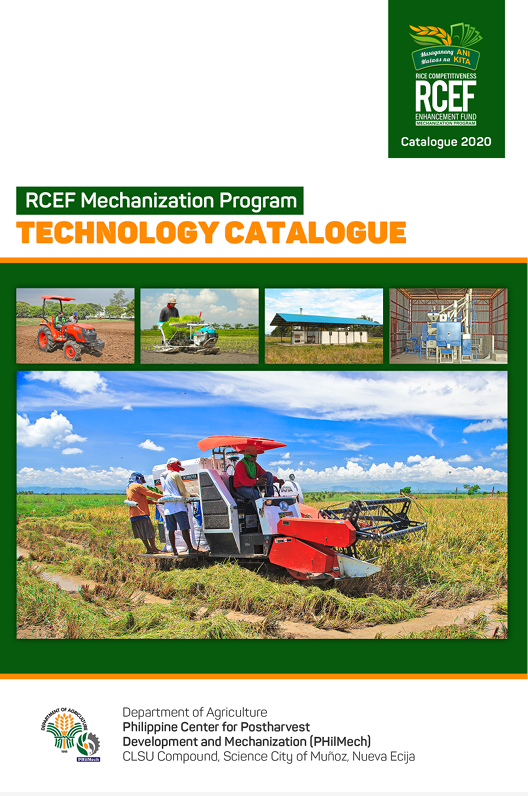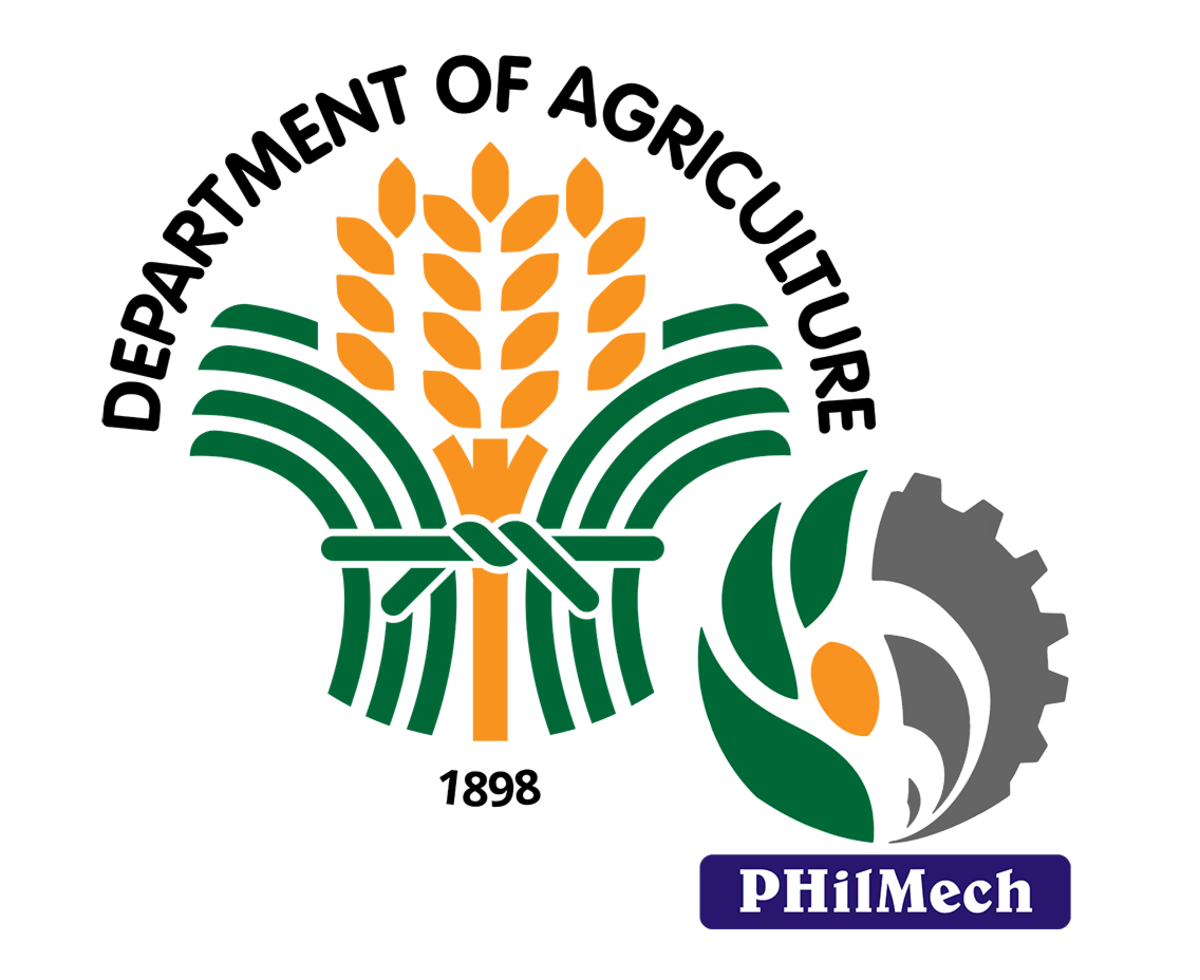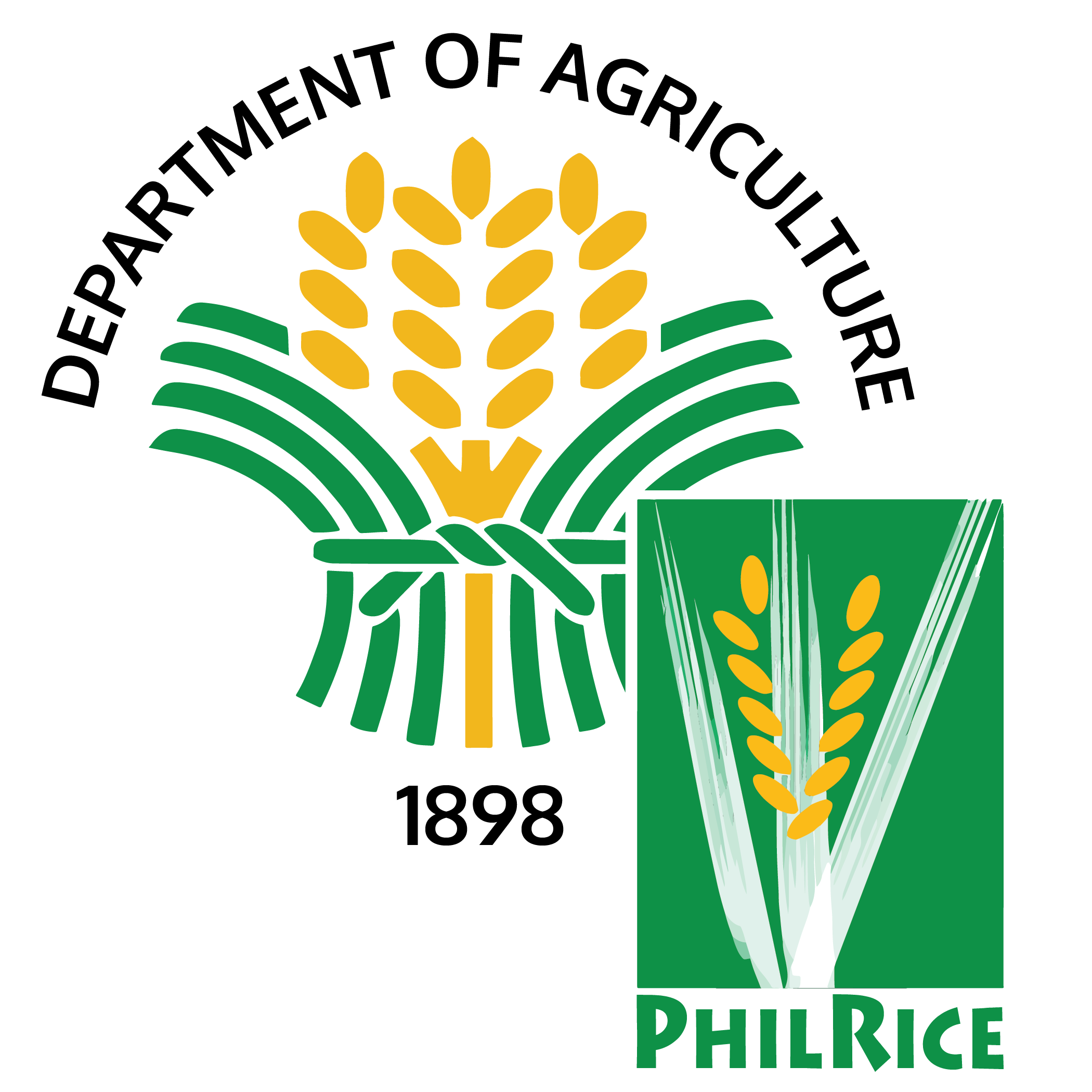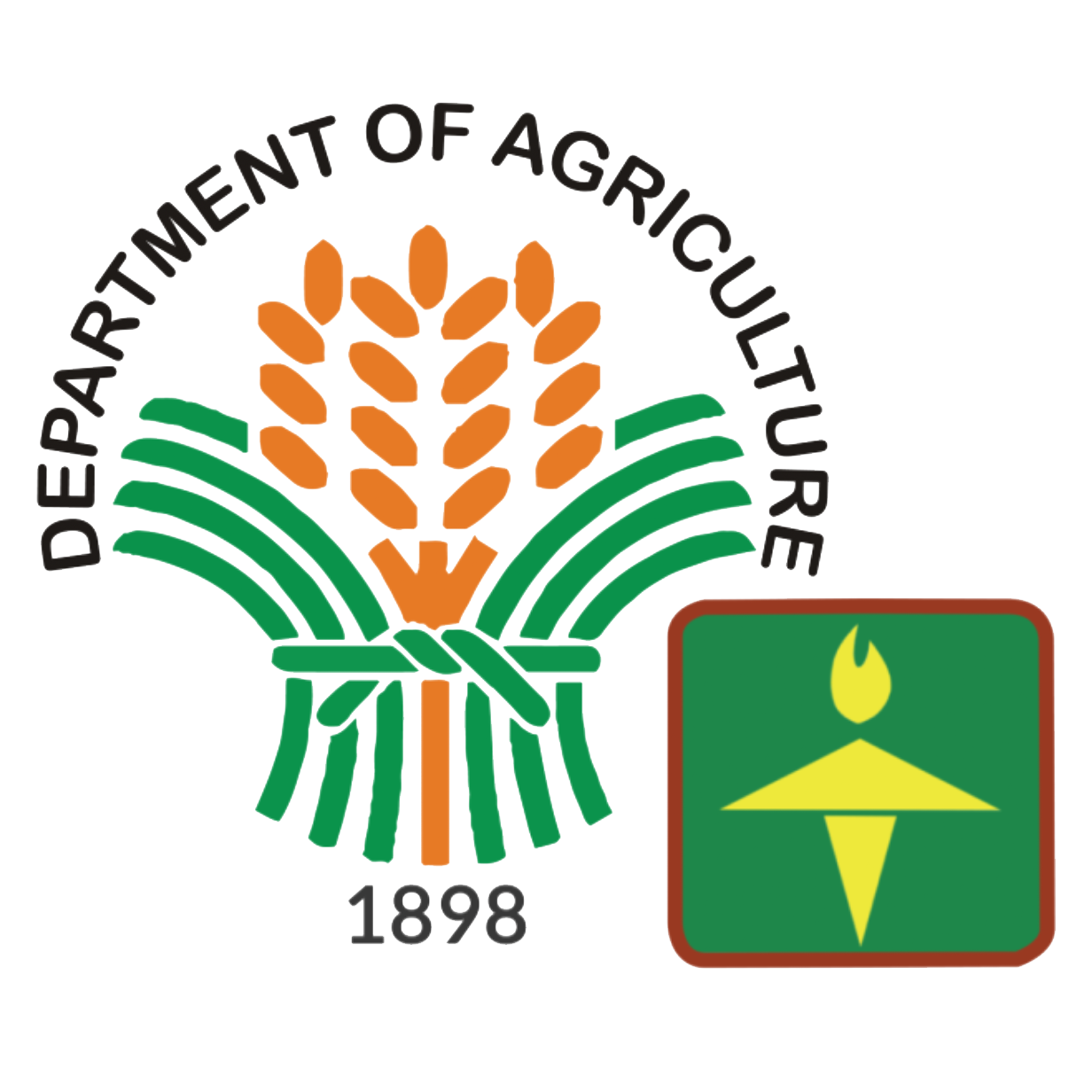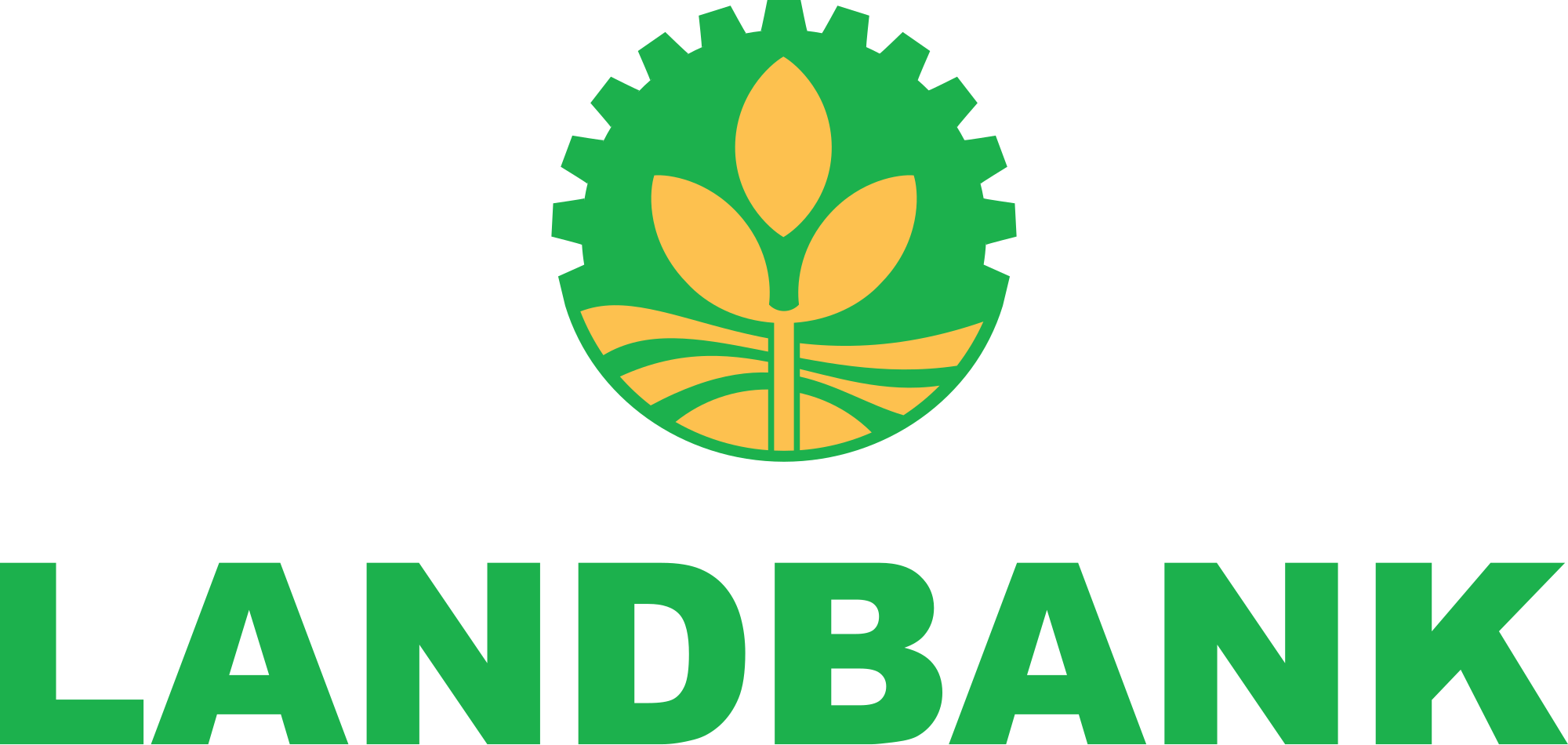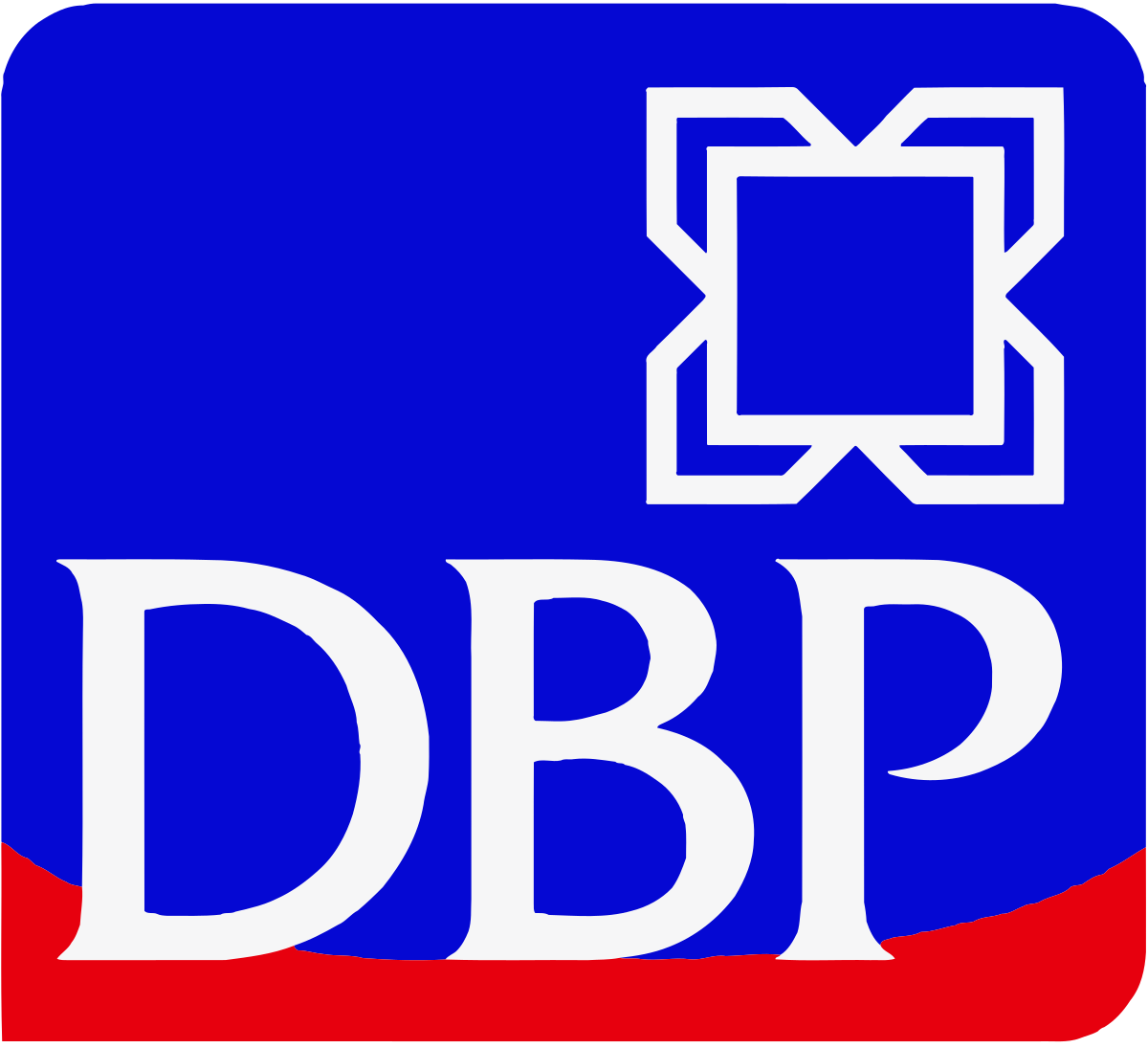Program Briefer
The Republic Act No. 11203 otherwise known as the “Rice Tariffication Law” was promulgated to ensure food security and to make the country’s agriculture sector viable, efficient and globally competitive. The law created the Rice Competitiveness Enhancement Fund (RCEF) or “Rice Fund” to improve rice farmers’ competitiveness and income amidst liberalization of the Philippine rice trade policy that lifted quantitative restrictions on rice imports and replaced it with tariffs, among others.
One of the major components of the program is the Mechanization Component which is being implemented by the Philippine Center for Postharvest Development and Mechanization (PHilMech). The component aims to raise rice farmers’ productivity, profitability and global competitiveness through strengthened access and use of appropriate production and postproduction mechanization technologies, which specifically aims to:
- Make accessible to rice farmers the appropriate rice production and postharvest machinery and equipment through to the farmer cooperatives, associations (FCAs).
- Promote among Filipino rice farmers the use of efficient and cost reducing rice mechanization interventions.
- Strengthen local agricultural machinery manufacturing industry through aggressive technology development, fabrication and manufacturing.
Component Briefer
The said component is allocated with 50% of the annual “rice fund” or 5 Billion Pesos per year for 6 years starting 2019. This is to provide appropriate agricultural machinery and postharvest facilities to eligible and registered rice-based farmer’s cooperatives and associations (FCAs) or Local Government Units (LGUs) with existing and active members, within the 57 major rice producing provinces of the country.
Benefits of the Program
The expected direct benefits of the mechanization and postharvest facility intervention specifically for the users and beneficiaries of the project areas can be derived from the following:
- Reduction of production cost of farmer-users by Php2-3 per kilogram using precise, effective and complete system of mechanized production technologies, and
- Reduction of postproduction losses of farmer-users by 3-5% using appropriate and efficient postproduction technologies.
Technologies that can be Availed
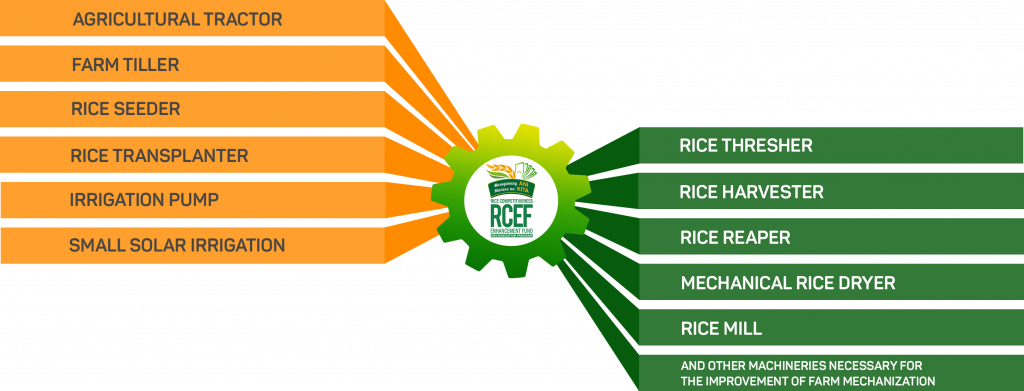
Requirements
For Farmer’s Cooperatives and Associations (FCAs)
a. Minimum Requirements
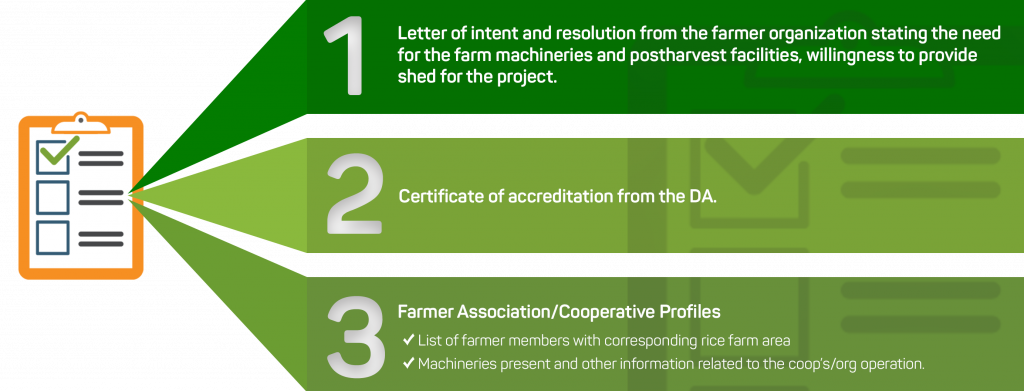
b. Technical Requirements
- Should have at least 50 ha rice farm of regular members.
- Must have a minimum rice area of 100 ha within the peripheral barangays from the proposed location of the agricultural machinery and postharvest facilities.
- Must have the capacity to operate and maintain the machinery and equipment and willing to undergo training course/s.
- Must be willing to provide machinery shed as counterpart for the project.
- Should be willing to operate the project according to the prescribed model.
- Follow the recommended suggested service fee
- Operate and manage the project using an integrated and systems approach of farm machinery and equipment operation and management.
- Should be willing to undergo capability building activities
- Should conform to the set objectives and functions of the project.
For Local Government Units (LGUs)
a. Minimum Requirements
- Letter of intent and resolution from the LGU Council.
- Provincial/Municipal/City/Barangay Council Resolution of LGU owned shed for the project.
- Rice Production Profiles
- List of rice farmers with corresponding rice farm area within the barangay where the project will be located.
- List of machineries present in the municipality/barangay where it will be located.
b. Technical Requirements
- The barangay where the project will be located should have a minimum rice area of 100 ha including its peripheral barangays.
- Must have the capacity to operate and maintain the machinery and equipment and willing to undergo training course/s.
- Must be willing to provide machinery shed as counterpart for the project.
- Should be willing to operate the project according to the prescribed model.
- Follow the recommended suggested service fee
- Operate and manage the project using an integrated and systems approach of farm machinery and equipment operation and management.
- Should be willing to undergo capability building activities
- Should conform to the set objectives and functions of the project.
